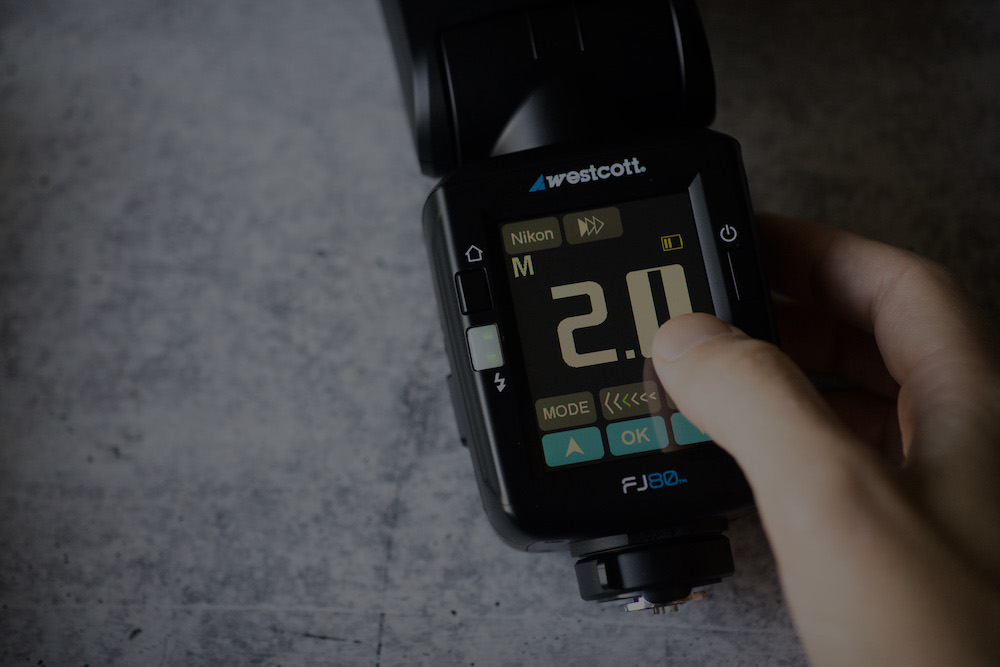At Flashpoint, we’re dedicated to making great products. To make sure we always deliver the best solutions, it’s important to stay competitive with new products entering the market. We trust in the dependability that our system can offer creators, and that’s why we’re happy to put it to the test when new products are introduced. This is why we asked Rob Hall to review the full lineup of new Westcott FJ lights and see how they measure up to the Flashpoint R2 system.
To round out my comparison of the Westcott FJ vs. Flashpoint R2 series, we’re comparing the Westcott FJ80 and the Flashpoint Zoom Li-on X. These two lights are direct competitors as both are hot-shoe speedlights with round flash heads. Both strobes offer TTL, HSS, stroboscopic, and manual control. Both lights can be used on camera, as a commander unit for additional flashes, or as an off-camera unit controlled by another speedlight or transmitter.
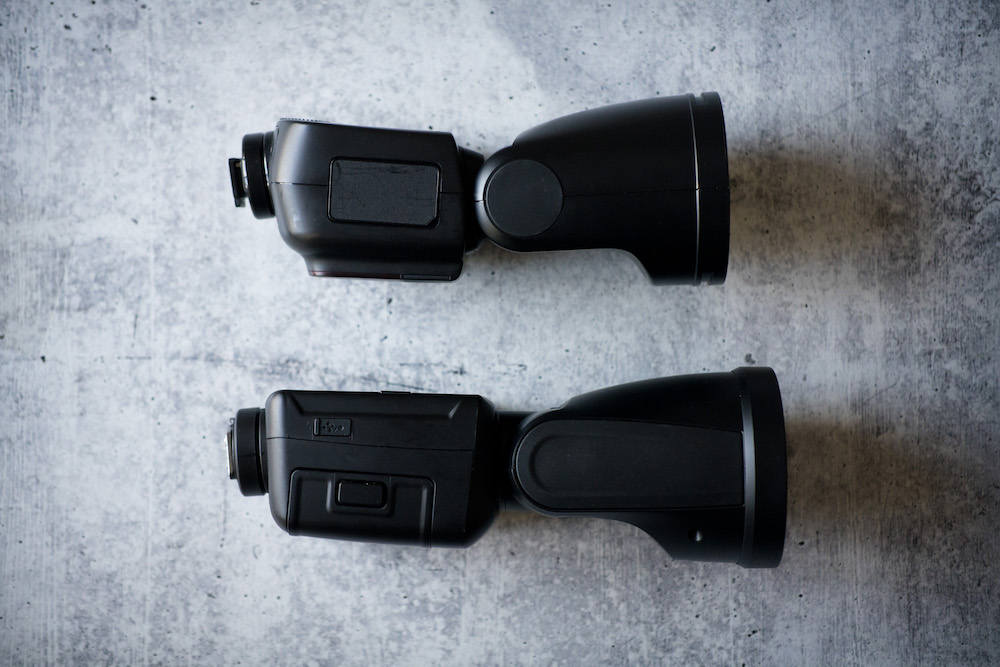
Size
Both of these units weigh in at 1.2 lbs with their batteries attached. The Westcott FJ80 is about an inch longer and has a bit wider of a flash head circumference.
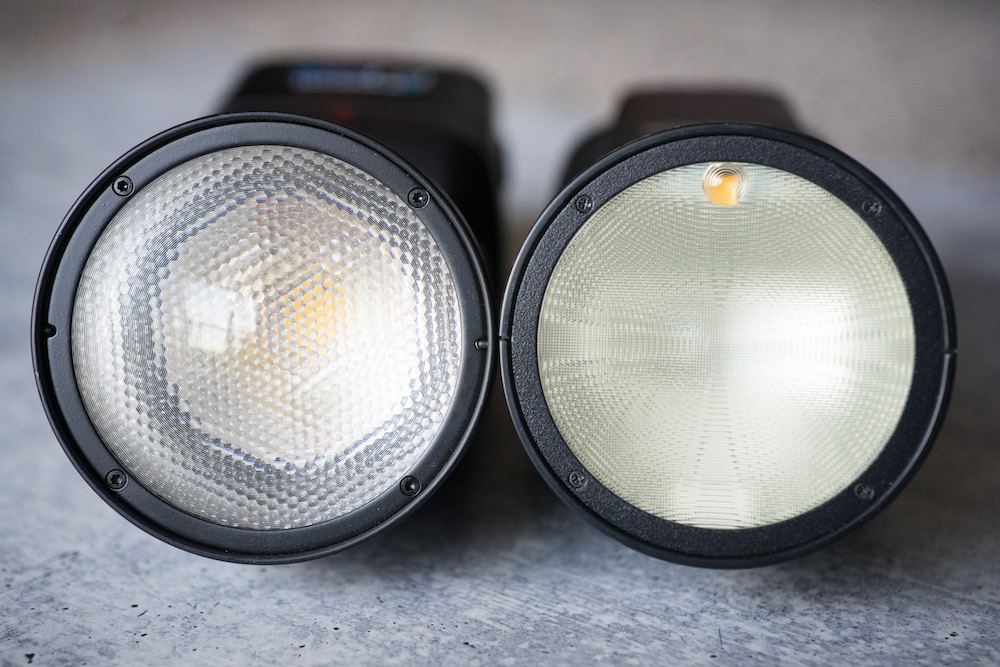
Design
The overall design is quite similar since both are capable of being used on camera. Both flash heads rotate both directions (with the Zoom Li-on X rotating 45 degrees more counter-clockwise). Both strobes have the very handy feature of reverse tilt, allowing photographers to bounce the on-camera flash over their shoulders without rotating the head 180 degrees.
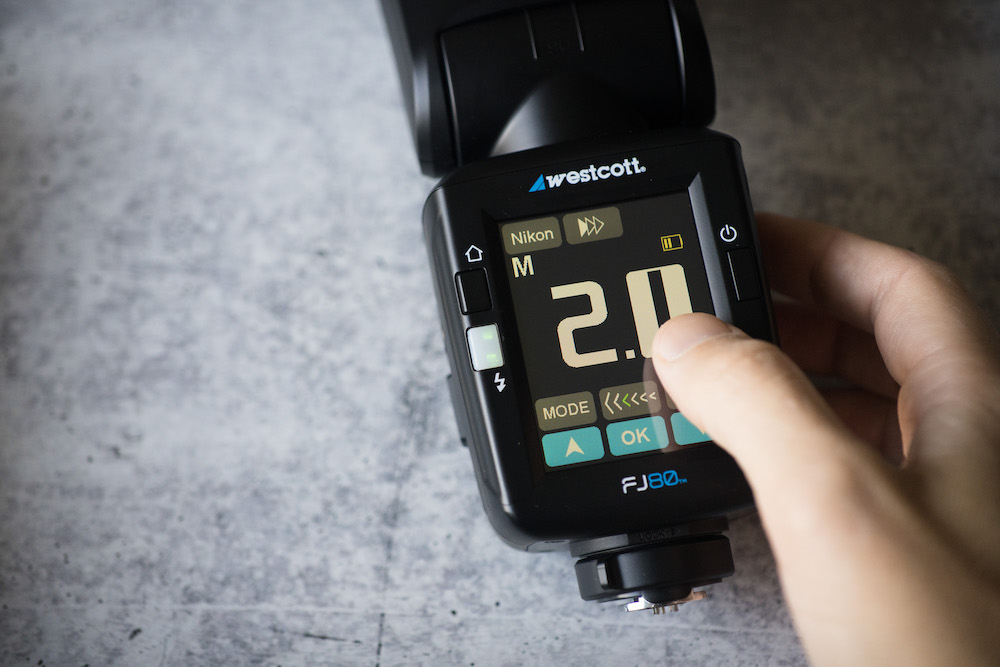
Interface and Controls
The design takes a dramatic twist when it comes to the display and controls. The Zoom Li-on X has the classic speedlight display, a backlit menu with buttons and dials underneath for controlling the functions of the flash. The FJ80 however has a large touchscreen color display covering the entire bottom portion of the speedlight. This results in the FJ80 having increased visibility with higher contrast and larger figures.
While the FJ80’s display is a beautiful and intuitive departure from typical speedlight controls, I found the touch screen cumbersome when it comes to controlling light output. The FJ80 displays flash power in integers with tenth stop control — so 3.0, 3.1, 3.2, etc. To control output you must first tap either the full stop (the 3) or the tenth stop (the .0), and then use the up-and-down arrow at the bottom of the display to adjust the flash output. There is no hold function to rapidly adjust output. This is true in both on-camera control, and when controlling off-camera units.
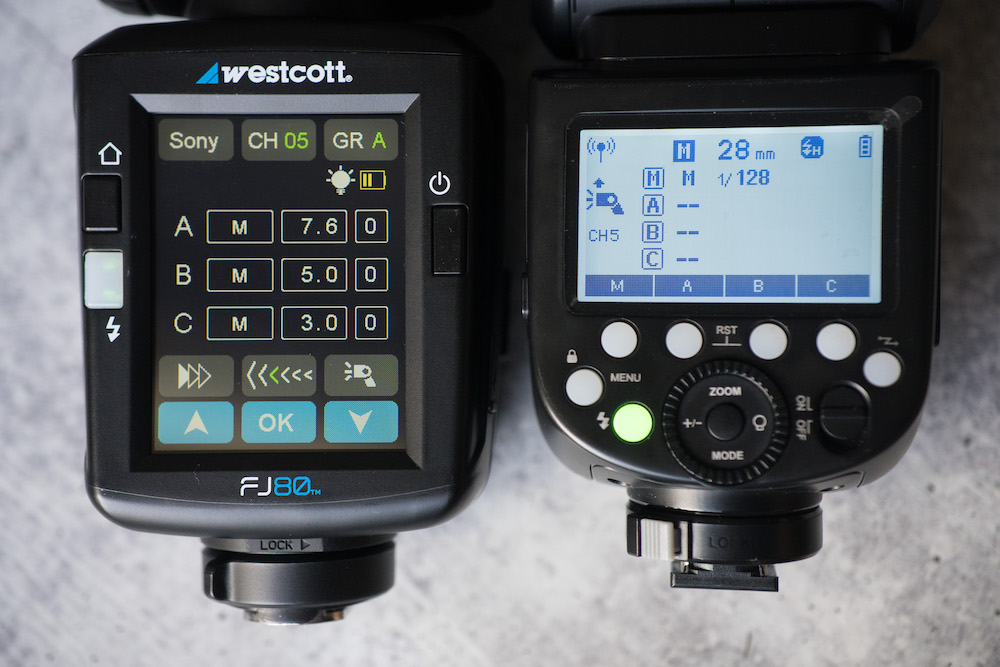
By contrast, the Zoom Li-on X has a pressable dial. You tap a button to initiate power control, and can rapidly rotate the wheel (which your finger is already on), or tap up and down for full stop control. As a strobist, I often find myself adjusting lights while tending to something else, either communicating with a client, walking to adjust a light’s position, or watching a moment develop at an event. The physical confirmation of the dial and button presses allows me to make adjustments without looking at my flash — something that I had no confidence doing on the FJ80.
Both units can be used as a commander to control additional units off camera, and the control experience is pretty similar. Both offer access to three off-camera groups, giving control of mode and power setting remotely. The Zoom Li-on X’s power adjustment controls stay exactly the same, but the FJ80 switches the full-stop power adjustment to tapping a group’s power setting, which took me way too long to discover.
Tech Specs
Now let’s jump into flash specs. Here is all the information I captured testing the lights using the Sekonic L858d-U light meter and C-800 Colorimeter.

Output
The Zoom Li-on X is 4/10 of a stop brighter at full power than the Westcott FJ80. While this isn’t often going to make a massive difference, I do find it considerable given the Westcott FJ80 is a touch larger.
Output Stability
Both speedlights have respectable output stability but the Zoom Li-on X retains it better through the lower power levels, leading to it having .7 stops more total output range. This means the Zoom Li-on X is more trustworthy at dropping a stop of output when you drop the power level by a stop.
Color
The Westcott FJ80 has considerably better color accuracy. The FJ80’s color temperature is closer to the daylight / 5500K standard, where the Zoom Li-on X approaches some color temperatures closer to shade. The Zoom Li-on X also has a strong green cast throughout it’s entire power range, whereas the FJ80 stays tint-free until it’s lower power levels.
T.1 Flash Durations
The FJ80 has better flash durations from full power through ⅛ power. But at 1/16 and below, the Zoom Li-on X distances itself significantly. At minimum power, the Zoom Li-on X has an impressive 1/27,000 of a second t.1 flash duration, and the FJ80 tops out at 1/12300. I don’t give this tremendous weight as photographers prioritizing action freezing will be better served choosing higher output strobes.
Battery
The Westcott FJ80 battery delivers approximately 400 full-power flashes, and the Zoom Li-on X will fire about 480. This is without considering the output difference. If you dropped the Zoom Li-on X down to match the FJ80’s peak output, the Zoom Li-on X would deliver over 600 flashes, 50% more than the FJ80.
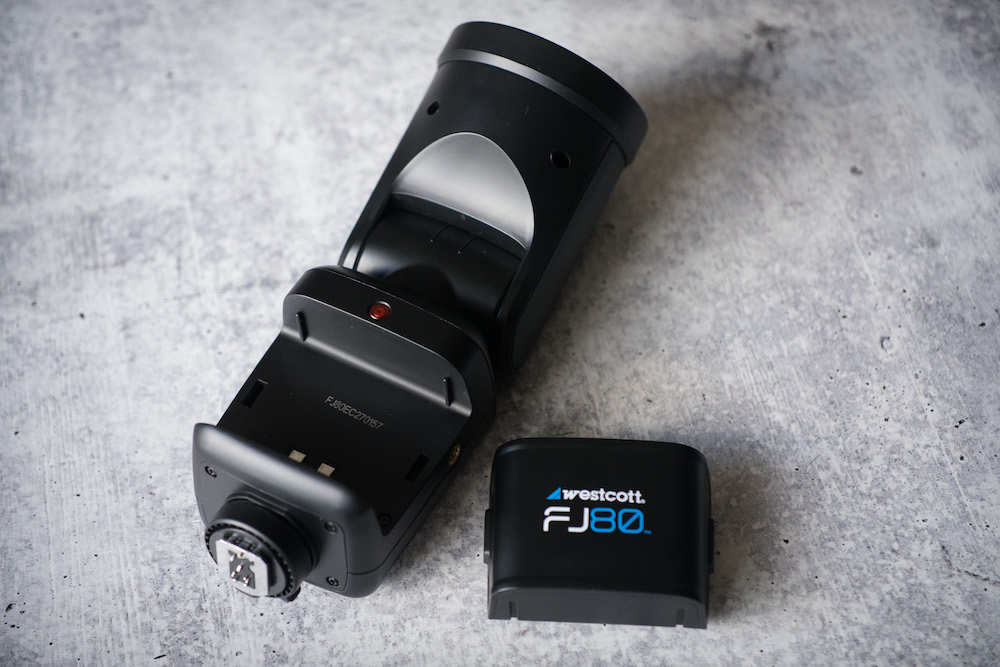
Recycle Time
Both lights recycle peak output at 1.2 second for an equal experience at keeping up with fast-paced action.
Compatibility
Both speedlights offer magnetic grids, gels, diffusers, and other accessories that attach directly to the flash. If you want to use larger umbrellas and modifiers, additional mounting equipment will be necessary.
Finer Points
The FJ80 requires much less effort to rotate the flash head when on camera. It has an extremely slow startup time. It takes roughly eight seconds from when you first press the “On” button to when the flash is capable of firing. The Zoom Li-on X fires up instantly after a short cycle off and takes 3-4 seconds if it has been off for a while.
The FJ80 has a ¼” 20 thread on its left side as an additional mounting point. It also has a universal hot-shoe that allows it to function on any camera, with Sony cameras requiring an adapter. The Zoom Li-on X is camera-model specific.
Cost
The Westcott FJ80 is $329, and the Zoom Li-On X is $269 (Currently $199 as part of Adorama’s holiday special).
Conclusion
While the FJ80 impresses by breaking away from the traditional speedlight design with it’s large color touch-screen display, the lack of physical controls may be a step back for power flash users. Still, the FJ80 is the obvious choice for anyone who prioritizes color accuracy. Newer flash users will appreciate the FJ80’s integer control units and intuitive display. Beyond that, the Zoom Li-On X is more powerful, more compact, and offers a familiar speedlight interface that is more likely to satisfy advanced flash users.
Article and Photo by Robert Hall

